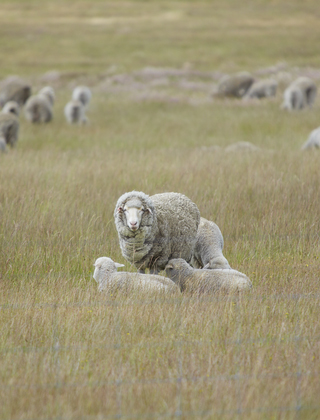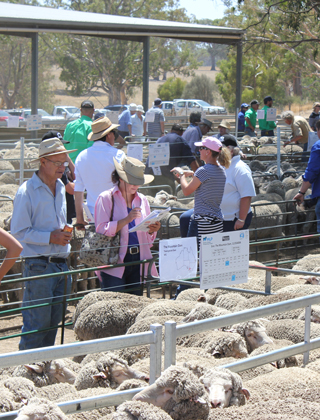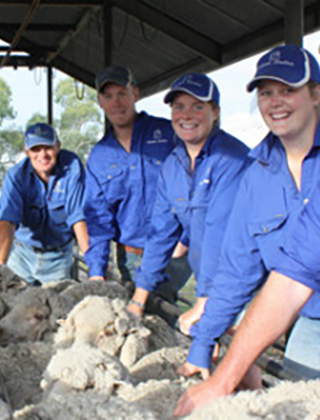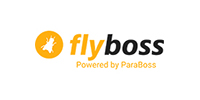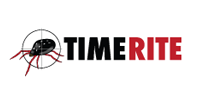Merino Lifetime Productivity
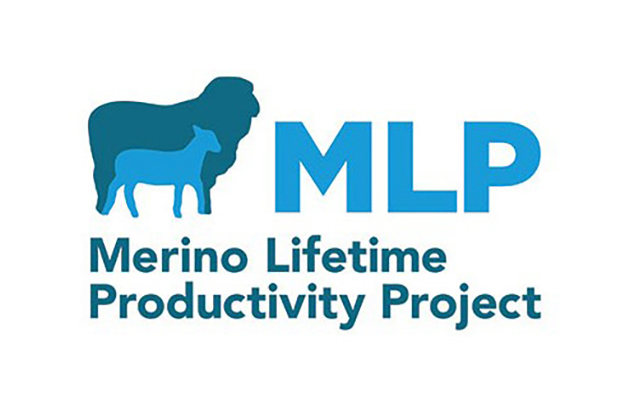
AWI and Australian Merino Sire Evaluation Association (AMSEA) have teamed up with five sire evaluation sites to deliver the AWI Merino Lifetime Productivity (MLP) Project between 2015-25.
AWI and Australian Merino Sire Evaluation Association (AMSEA) have teamed up with five sire evaluation sites, site hosts and nominating stud breeders, to deliver the AWI Merino Lifetime Productivity Project (MLP). The project will receive $8 million dollars in funding from AWI over ten years from 2015, along with $5 million in support from project partners.
The 10-year project is designed to capture lifetime data across diverse environments and Merino types to help better understand and deliver Merino ewe lifetime performance outcomes for the Australian Merino industry.
AWI hosted a national webinar in mid-July 2025 to provide an update to all outcomes we currently know from the AWI MLP project. AWI is committed to providing regular updates to release what we know as soon as it’s completed. View the full webinar below.
FURTHER RESOURCES & INFORMATION MENTIONED IN THE WEBINAR
- Australian Merino Sire Evaluation Association Merino Superior Sires Website
- Making More From Sheep Module 9: Boost business with breeding
- AWI Sheep Selection Tools booklet
- AWI & MLA Visual Sheep Scores Guide
- Sheep Genetics ASBVs and Indexes explained
- Sheep Genetics Flock Profile
- AWI Visual Classing Merino Sheep booklet
- AWI Picking Performer EwesTM Workshop
- AWI Practical Workshops
- AWI Beyond the Bale December 2023: Assessing, classing and selecting sheep
- AWI Beyond the Bale September 2024: Visual Sheep Scores Guide updated for 2024
- AWI Beyond the Bale March 2025: Unlocking genetic potential: The importance of quality raw data in breeding
- AWI Beyond the Bale June 2023: Merino Genomic Reference Flock
- AWI Beyond the Bale June 2025: AWI genomic investments
- AWI Beyond the Bale December 2023: MLP project proving its value
- AWI Beyond the Bale September 2023: Leveraging research from the MLP project
- AWI Beyond the Bale December 2024: MERINOSELECT ASBVs by fibre diameter and their genetic trends
- AWI Beyond the Bale June 2025: Selection for more methane efficient sheep
- AWI Beyond the Bale June 2024: How well does early performance predict lifetime performance of MLP sires?
Frequently Asked Questions
The Merino Lifetime Productivity (MLP) project has generated an unprecedented dataset for the Merino industry. Analysis of this vast dataset is well underway, and these FAQs present the background of the project and some of the initial findings. They provide valuable insights into age of assessment, the economic drivers of lifetime productivity, and the tools that can be used to deliver productivity. However, it is important to note that analysis is ongoing, and further refinements will continue to emerge.
The teams analysing the data are now generating outputs that address the core questions MLP was designed to answer. Current areas of work include:
- Developing full genetic parameter estimates across traits.
- Improving methods for predicting adult trait performance at young ages
- Conducting economic analyses, including gross margin per dry sheep equivalent (DSE) and profit per hectare, and exploring their correlation with genetic indexes.
- Undertaking a benefit–cost analysis of visual and measured assessments.
The findings presented here should therefore be seen as early outcomes, which will be strengthened as peer review, economic modelling, and further data analysis continue through to 2026.
What is the Merino Lifetime Productivity (MLP) project and why was it established?
- MLP, which commenced in 2015, is a $13 million collaboration between Australian Wool Innovation (AWI), Australian Merino Sire Evaluation Association (AMSEA), ram breeders, and five sire evaluation sites.
- It tracked 5,700 ewes (daughters of 134 sires) across four to five joinings and annual shearings, generating over two million lifetime records.
- The project was designed to address a key gap in Merino breeding: understanding how early-life selection decisions translate into whole-of-life productivity (wool, carcase, reproduction, and survival).
- Further analysis of the data will continue through 2026.
What are the objectives of the MLP project?
When the AWI Board approved the project in 2015, it was on the basis of a set of clear objectives designed to address long-standing gaps in Merino breeding research. These objectives were to:
- Add significant adult data to improve the accuracy of lifetime productivity predictions.
- Better predict lifetime performance from young-age measurements.
- Define correlations between key lifetime performance traits, such as wool, reproduction, and survival.
- Compare the cost and accuracy of visual classing versus objective assessments at young ages and track their effectiveness through repeat annual lifetime measurements.
- Develop new breeding values (e.g. for survival traits).
- Compare index performance against economic returns to ensure that selection tools align with real profitability.
- Enhance genomic reference populations to improve the accuracy and accessibility of genomic breeding technologies for the Merino industry.
How were the MLP sites chosen and what did they represent?
The MLP sites were chosen through a rigorous, structured process designed to ensure that each site could deliver robust and high-quality data while representing the diversity of Australia’s Merino production systems.
- The five sites (Balmoral, VIC; Pingelly, WA; MerinoLink, NSW; Macquarie, NSW; and New England, NSW) represented a broad cross-section of Australian Merino production environments, from high rainfall to Mediterranean, slopes/plains to tablelands.
- The variety of sites chosen allowed the project to assess how different genetics perform across contrasting environments and management systems.
- Each site had an experienced local committee actively involved in sire evaluation, ensuring protocol compliance and valuable industry input.
- A high-quality, well-balanced ewe base was also essential so that data collected would be representative and minimally biased.
- The strategic and repeated use of selected “link sires” across multiple MLP sites and joining years created strong genetic linkage within the project. This enabled data from each site to be accurately adjusted for environmental and management differences and then combined to create the MLP dataset.
- Linkage was also deliberately established with the national MERINOSELECT genetic evaluation system, which enabled the MLP project dataset to be used to strengthen both the routine analysis and the Merino genomic reference population, leading to more reliable breeding values.
What data was collected?
The MLP project dataset was completed in July 2024 and included a comprehensive range of annual lifetime visual, objective, and classing assessments, covering:
- Wool traits – fleece weight, fibre diameter, staple strength, yield, character, fleece rot, colour, and other related fleece quality traits.
- Growth and carcase traits – liveweight, eye muscle depth, fat depth, and condition score.
- Reproduction traits – pregnancy status, litter size, weaning rates, and ewe rearing ability.
- Health and welfare traits – worm egg count, breech and wrinkle traits, feet, udder and teats, teeth and structure.
- Genomic data – all F1 ewes were genotyped with a 50K SNP chip.
How were sires selected for the MLP project?
- Each site called for nominations from ram breeders across Australia, encouraging a wide range of Merino types, breeding philosophies and performance.
- Nominated sires were evaluated against agreed selection principles to ensure they were industry representative and relevant.
- The project aimed to have a balance of horn/poll, mix of skin types, high-use sires, show winners, sires with high semen sales, young and proven sires, and a range in performance for key production traits.
- Sires with ASBVs were drawn from across four main MERINOSELECT genetic groups, with an additional group outside these categories. They were chosen in proportion to their frequency in the national flock to ensure the project reflected the diversity of Merino breeding so that the MLP outcomes were representative of the breadth of genetics available to Australian Merino breeders. The groups were:
- wool-focused sires
- high-indexing sires
- meat-focused sires
- specialist fine wool sires
- plus a smaller “other” group that did not fit within these categories.
- In addition, some sires were funded by AWI to be involved to fill specific performance gaps, while others were funded to create genetic linkage between sites.
- A Sire Advisory Group (SAG) was established to identify rams with strong industry impact. Specifically, the SAG focused on selecting sires that had performed well in shows and multi-vendor sales, ensuring the inclusion of animals with proven relevance and visibility across the industry. This helped strengthen the comprehensiveness and credibility of the sire evaluation within the MLP project.
- Final sire listings were confirmed with the site committees, the MLP project executive and the project's Industry Steering Committee, ensuring broad input and alignment with project objectives.
What is the optimal age for selecting for lifetime performance?
- MLP findings show that, regardless of whether you are using a classer or objective data, assessments made at 18–22 months (late Hogget/early Adult age) are much more predictive of lifetime wool production and progeny performance than assessments at 9–12 months (Post-Weaning or Yearling).
- This is because sheep are still maturing at younger ages, and early measures can be confounded by growth, nutrition, and environmental factors. Relying too heavily on early-age data risks reduced accuracy in selection and can misrepresent an animal’s true productivity potential.
- Later assessments smooth out the ‘noise’ of early-life environmental variation and better reflect future potential.
Does this mean selection should occur later?
- Later-age assessments (18–22 months) have proven to be stronger predictors of lifetime performance - particularly for key fleece traits - with classing at this stage showing a closer alignment to whole-of-life productivity outcomes.
- The trade-off is that delaying selection to this stage can increase measurement and management costs and may lengthen generation intervals.
- Early findings from the MLP project demonstrate that genomic testing can significantly improve the accuracy of early-age predictions, helping to offset the limitations of young-age measurements and reducing the cost–accuracy trade-off.
- Breeders need to balance:
- The additional cost, logistical complexity, and potential generation interval impacts of later-age measurement or the use of genomics, against
- The reduced accuracy and increased risk of mis-selection when relying solely on early or partial-drop data.
- For commercial breeders, the practical application is to make selection decisions as late as is operationally and economically feasible, ideally just before a ewe's first joining to maximise prediction accuracy.
- For ram breeders, an optimal strategy may be a combined approach, integrating:
- early-age measurement and classing of rams
- genomic testing
- later-age assessment of retained stock and hogget (18–22 months of age) ewes.
What has the MLP shown about balancing visual classing and objective measurement?
- Across the project, there is generally good alignment between visual grades and production-based indexes (e.g. MP+), but:
- Some top indexing animals have poor conformation.
- Some top visually classed animals have low indexes.
- This confirms that each method can miss important traits that the other captures.
- MLP confirmed that:
- Visual classing is cost-effective and accurate for traits that can be observed (e.g. fleece weight and body weight).
- However, visual classing has lower accuracy for less visually obvious traits such as carcase traits, disease resistance, and other welfare traits.
- Across most sites, ewes with higher lifetime reproduction rates were classed down later in life due to the impact of reproduction, highlighting the importance of reproduction records when classing older ewes.
- ASBVs and index-based selection are effective for non-visual traits and when breeding objectives involve multiple antagonistic traits (e.g. balancing fleece weight, fibre diameter, reproduction and worm resistance).
- Integrating both visual classing and objective measurements allows breeders to capture the benefits of each system, ensuring that genetic gain is optimised while improving structure and wool quality.
What did MLP find about sires evaluated in the project that were bred with and without ASBVs?
- For the sires evaluated in the project, both groups produced high-performing sires, but with different strengths:
- Non-ASBV sires evaluated in the project: on average, higher in traits that can be more readily assessed visually such as fleece weight.
- ASBV sires evaluated in the project: stronger in traits that are less easily observed, such as reproduction, worm resistance, and carcase and eating quality traits.
- This validates that both pathways can produce productive sires, but the trait emphasis can differ depending on the tools used.
What operational considerations did MLP highlight for breeders and classers?
- Beyond trait heritability and genetic insights, MLP delivered important practical lessons for better management of selection and classing on-farm to maximise accuracy and consistency. Key considerations include:
- Around 25% of commercial woolgrowers do not class sheep, which leaves significant potential gains unrealised. The project showed classing at the Hogget or Adult stage provides a strong option for those commercial flocks, offering a balance of cost and accuracy.
- Small management groups make both visual classing and data analysis less reliable. Where possible, run sheep as larger groups to reduce variation between groups and improve the accuracy of data collection.
- Assistance from data managers or service providers can improve consistency, record-keeping, and rigour in both visual and measured assessments.
- Classing adult ewes following weaning requires caution, as reproductive effort can temporarily alter body condition and wool traits, potentially biasing decisions.
- Incorporating at least one hogget or adult fleece weight into selection programs significantly improves the accuracy of predicting lifetime wool production. In contrast, reproduction traits require multiple years of repeated data to achieve reliable genetic predictions.
- The key message is that good protocols and management design matter as much as the tools chosen (visual and objective measurements). Rigorous, well-structured assessments lead to stronger selection outcomes, while shortcuts and inconsistent application compromise accuracy and confidence.
MLP contributions to reproduction and reproduction analysis
- The late Professor Andrew Swan's work on the MLP reproduction analysis was a stimulus behind the creation of the new MERINOSELECT reproduction analysis, which now incorporates the component traits of reproduction.
- The new reproduction analysis produces Weaning Rate (WR) ASBVs and its three component traits: Conception (CON), Litter Size (LS) and Ewe Rearing Ability (ERA).
- MLP’s extensive lifetime dataset, comprising more than 20,000 weaning rate records from 4,800+ ewes was important to the establishment and delivery of the new genomically enhanced analysis.
- Analysis has shown that accurate sire breeding values for WR require data from at least two joinings of daughters, and that accuracy improves further with more ewe progeny per sire, especially when genomic data is absent.
- Inclusion of genomic data greatly improved accuracy for lowheritability reproduction traits, enabling reliable estimates from fewer progeny and reproduction events.
- Fat and muscle are lowly correlated with WR, so direct selection for WR is preferable to using fat depth as a proxy.
- The project’s use of syndicate joinings to generate reproduction records showed wide variation in ram mating success, with the top 20% of rams siring more than eight times as many progeny as the bottom 20% across sites.
- Being born and or reared as a twin generally disadvantages a sheep in terms of early growth, body weight and visual classing grade, and these effects can carry through to later assessments if not accounted for. However, sire rankings for most measured traits remain consistent after adjusting for birth type, meaning the effect is primarily environmental rather than genetic. The project’s data confirms the importance of accounting for birth/rear type in both on-farm selection and genetic evaluations.
How heritable is survival, and what influences it?
- An early survival analysis from birth to four years of age showed that survival had low heritability (~0.06) but showed significant sire variation. It was favourably correlated with wrinkle (0.4), meaning that genetically plainer ewes tend to have higher survival rates.
- This analysis is being updated to include ewe survival data out to six and seven years of age.
What were the MLP Add-On projects, and what did they reveal?
- Alongside the core MLP data collection, a series of MLP Add-On projects were undertaken, leveraging the project livestock and extending the value of the dataset, to investigate traits of growing importance to industry.
- These projects demonstrated that MLP could deliver insights well beyond wool and reproduction, tackling areas of animal welfare, carcase and eating quality, efficiency, and sustainability.
- Projects showed that:
-
- Udder and teat structure is heritable (0.23 to 0.36) and strongly influences lamb survival and weaning weight. Poor udders reduced lamb survival, supporting the inclusion of udder/teat scores into the Visual Sheep Scores and eventually ASBVs.
- Genetic selection for reduced flystrike risk is now possible, accelerating welfare outcomes.
- Skin pigmentation at young ages predicted lifetime pigment expression, supporting early selection for this trait.
- Yield accuracy was highest with mid-side sampling, even under drought conditions.
- Preliminary Methane Project Breeding Values (PBVs), with 15% of national phenotype coming from MLP ewes, showed moderate heritability (~0.19) and generally unfavourable genetic correlations with body weight and fleece weight (~0.2), requiring careful balancing in indexes.
- Resilience (immune competence) has moderate heritability (~0.38), with small associations with production traits. This suggests breeders can target resilience directly without compromising wool traits.
- Further work on flystrike resistance, body fat efficiency, pigmentation, and footrot resistance is also expanding the range of genetic tools available to Merino breeders.
What are the key economic findings so far?
- Preliminary gross margin analyses suggest Indexes need greater emphasis on Adult Fleece Weight.
- Profit per hectare analysis (due late 2025) will integrate wool, reproduction, and methane traits.
- These analyses will guide refinement of MERINOSELECT Indexes and breeding strategies.
Did the MLP show which traits drive profitability most strongly?
- No single trait dominated. The most profitable animals combined:
- High fleece weight (wool income driver).
- Strong reproduction (higher weaning rate).
- Good resilience/survival traits (lower loss rates, welfare benefits).
- Which trait matters most depends on the environment and enterprise mix.
What resources have been delivered so far?
- Outputs include:
- 31 site reports (11,600+ downloads), seven podcasts, 18 newsletters, 33 Beyond the Bale articles, 23 field events (2,155 attendees).
- Updated extension content and tools, including updates to the Visual Sheep Scores Guide, AWI Flystrike Extension Program™, and AWI Picking Performer Ewes™.
- MLP Add-On projects (e.g., footrot, resilience, methane) continue to deliver practical tools.
What’s next for the MLP project?
- Scientific outputs: 25 papers published, 29 more underway.
- Economic analyses: Profit/ha results due late 2025.
- Extension: Final MLP site field days in 2026; resources tailored for different production systems.
- Continued collaboration between scientists and ram breeders for shaping next-generation breeding Indexes.
MLP Project Sites & Partners
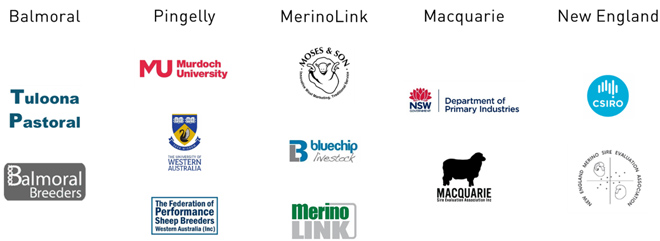
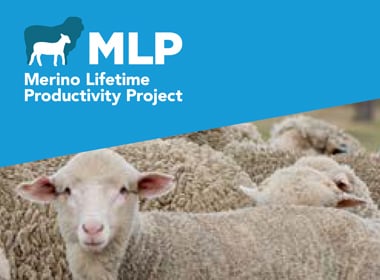
Download the Project Brochure
Read more about the Merino Lifetime Productivity Project in the MLP brochure (PDF 696 KB)
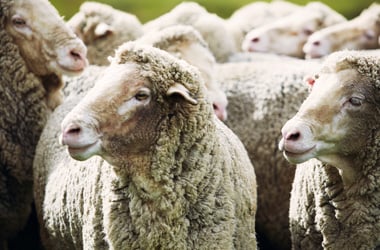
MLP Sites, Sires and More Information
Visit the Merino Lifetime Productivity Project page on the Merino Superior Sires website to find out more about the project’s aims, evaluation sites, the sires and ewes involved and to access project reports.
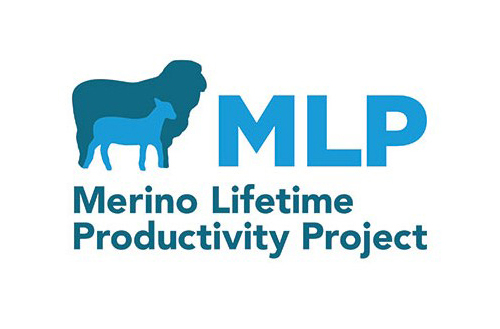
Download MLP Reports
MLP Reports including raw data, adjusted sire means, breeding values and indexes are produced annually for each site. They can be downloaded from the Merino Superior Sires website.
The project is an opportunity to answer many of the industry’s questions in relation to selection and ewe lifetime performance, such as:
- Is it possible to select for lifetime productivity at a young age using raw data, breeding values, genomically enhanced breeding values, visual classing or a combination of industry approaches?
- What is the impact of selecting for wool, growth, reproduction, welfare and carcase traits on the productivity of Merino ewes over their lifetime?
- Why do some animals perform year in and year out, while others fade over time?
- Are there new ways to better predict superior lifetime performance?
Read about the Merino Lifetime Productivity Project in AWI’s Industry Communications
MLP Newsletter:
- MLP Newsletter No 18 - September 2024
- MLP Newsletter No 17 - April 2024
- MLP Newsletter No 16 - October 2023
- MLP Newsletter No 15 - May 2023
- MLP Newsletter No 14 - December 2022
- MLP Newsletter No 13 - August 2022
- MLP Newsletter No 12 - February 2022
- MLP Newsletter No 11 - September 2021
- MLP Newsletter No 10 - July 2021
- MLP Newsletter No 9 - May 2021
- MLP Newsletter No 8 - December 2020
- MLP Newsletter No 7 - October2020
- MLP Newsletter No 6 - June/July 2020
- MLP Newsletter No 5 - March 2020
- MLP Newsletter No. 4 - December 2019
- MLP Newsletter No. 3 - June 2019
- MLP Newsletter No. 2 - March 2019
- MLP Newsletter No. 1 - December 2018
MLP Project Updates:
- MLP Project Proving its Value - December 2023
- AWI and AGBU Partnering for Genomic and the MLP Analysis - March 2022
- Profiling the Pingelly MLP Site - December 2021
- MLP Data-to-date - September 2021
- Adding on to the MLP - June 2021
- Meet the MLP Team & September 2020
- MLP Project Update – June 2020
- MLP Project Update - June 2019
- MLP Project Update - March 2019
- MLP Project Update - September 2018
- MLP Project Update - June 2018
- MLP Project Update - March 2018
- MLP Project Update - December 2017
- MLP Project Update - June 2017
- MLP Project Update - December 2016
- MLP Project Update - June 2016
Merino Superior Sires:
- Merino Superior Sires no30 now available - December 2024
- Merino Superior Sires no29 now available - December 2023
- Merino Superior Sires no26 now available - December 2020
MLP Beyond the Bale Articles:
- Unlocking genetic potential: the importance of quality raw data in breeding - June 2025
- MLP insights: improving reproduction rates - December 2024
- How well does early performance predict lifetime performance of MLP sires? - June 2024
- Wrinkle expression in the MLP project - March 2024
- MLP Project proving its value - December 2023
- Leveraging research from the MLP project - September 2023
- AWI and AGBU partnering for genomics and the MLP analysis - March 2022
- Profiling the Pingelly MLP Site - Beyond the Bale December 2021 p48-49
- MLP Data-to-date - Beyond the Bale September 2021 p36-37
- Adding on to the MLP - Beyond the Bale June 2021 p44-45
- Ram mating success insights - Beyond the Bale March 2021 p40-41
- Merino Lifetime Productivity project update - Spring 2025
LISTEN ABOUT THE MERINO LIFETIME PRODUCTIVITY PROJECT ON AWI'S PODCAST 'THE YARN'
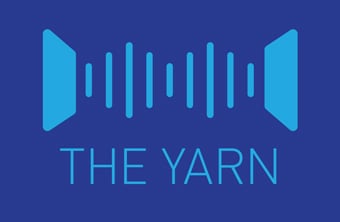
Gaining genetic ground with an MLP milestone - episode 129
The Merino Lifetime Productivity (MLP) Project has reached its halfway mark, so what does this mean for the commercial and stud breeders of Australia's wool industry?
Merino Lifetime Productivity Project Update episode 86
Four years into the ten-year long MLP Project, the industry experts from the MLP Industry Steering Committee share the successes of the project so far and the outcomes the industry hopes to see in the future.

Related Articles
- A day of firsts and lasts - the MLP Project New England Field Day article
- Can we find a better way to compare sheep performance
- MerinoLink - Linking the Merino Industry
- Genetic aspects of lifetime productivity in Merinos - A Review by R.R. Woolaston
- Low wrinkle - high fleece weight - June 2019
- Sire evaluation made easy via new website - December 2018
- R&D into profit per hectare of different merino types - December 2018
- Improving merino resilience - December 2018
- Merino sire evaluation explained - December 2018
- Scanning for age of foetus - June 2018
- Independent classing and measurement combine to deliver merino sire evaluation - September 2016
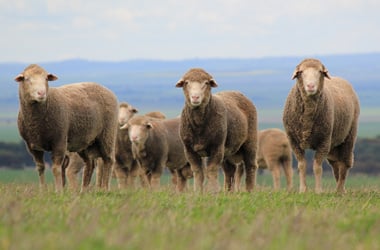
Associated MLP “Add On” Projects
Read more on the list of MLP Add-On Projects (Add-on projects use the core MLP sheep for additional R&D but are separate to the core purpose of the MLP)
Merino Lifetime Productivity ANALYSIS AND REPORTING PLAN VERSION 2
Read the MLP Analysis and Reporting Plan. Feedback welcome to Geoff.Lindon@wool.com






